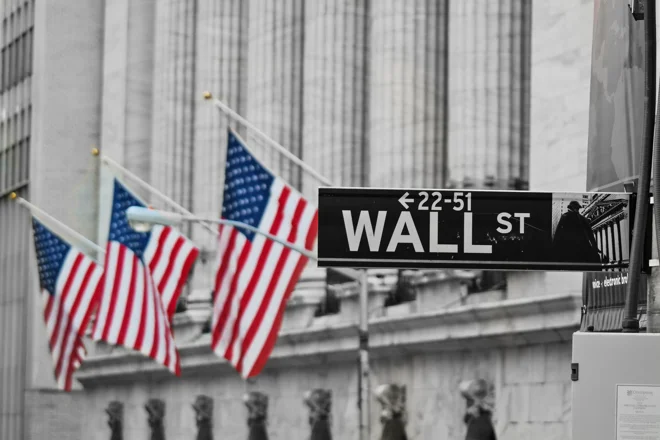“Economists will know tomorrow why the things they predicted yesterday didn’t happen” is a joke that, in this fast-moving market cycle, has a deeper lesson. Rather than sticking to an all-knowing prediction, it’s more fruitful to use a transparent cause-effect framework to recalibrate the base case as events unfold.
Market sentiment has turned increasingly bearish on fears of “policy mistakes”, China’s lockdown/slowdown and the ramifications of Russia’s invasion of Ukraine. Despite this, we remain marginally overweight risk assets in our tactical allocation, on anticipation of still positive – albeit slowing – growth, inflation eventually peaking (though taking time to moderate from currently high levels), and limited risks of hawkish surprises from the Fed relative to current market pricing.
We still think China is likely to stabilise: coordinated monetary and fiscal stimulus, plus reopening once the virus is more under control, should support the economy; new infections, encouragingly, are dropping. These are the signposts we’re looking for to validate or disprove our outlook. Our most preferred regions, tactically, remain the US (via equities) and emerging markets/Asia (via equities and credit).
Later in the cycle, but not so late: The economic cycle is still expanding, but spending and earnings growth has now moved past the peak. While the cycle is maturing, US recession in 12 months isn’t our base case, given strong job creation, robust (albeit no longer accelerating) wage growth and relatively resilient domestic demand. Should there be a recession, either unexpectedly within the next year or inevitably further down the line, we think it’s likely to be mild in the US, as it lacks the financial imbalances typically associated with deep and protracted contractions. Relative to the past cycle, banks are well capitalised this time around, lending growth across mortgages, consumer credit and corporate loans is positive but hardly out of control. Household and corporate balance sheets are in good shape and, from record levels, government debt as a share of the economy is declining.
Differentiated picture around the world: The probability of recession (from short-lived contractions to full-blown downturns), of course, is much higher in the euro area, given its significant exposure to the conflict in Ukraine and its high reliance on Russian oil and gas. The UK is in between: it’s not as directly exposed to the war (though it’s exposed to the euro area), but its economic fundamentals are weaker relative to the US. China – the key global growth engine together with the US – should at least stabilise, or perhaps rebound slightly, once the lockdown eases. Even though we’re not there yet, the encouraging thing is that new infection rates are now slowing. And China has a unique ability to stimulate its economy: the West is raising interest rates, China is cutting them; the West is reducing fiscal stimulus, China is increasing it. Reopening would allow the policy impulse to feed through.
Here’s why this matters:
Keeping an eye on inflation: Absent new shocks, inflation should peak this year. The latest US figures show a slight deceleration, though one data point doesn’t make a trend and we’d need more evidence to call the peak. We’re not saying that the price of goods and services will fall. Rather, we expect the rate of increase in prices (which is inflation) to slow. Take oil: its price went from 15 dollars per barrel at some point last year to 115 currently – a 666% increase. Now, imagine that it stays at 115 dollars. After 12 months, that’s a 0% change. What’s more, demand is normalising – as wage growth, measured by a smoothed version of average hourly earnings, has been decelerating sequentially for four months. The fiscal impulse has waned. Interest rates, from record lows, are rising and money supply growth is slowing. And, while things haven’t improved that much on this front just yet, supply will eventually expand, pushing inflation down. Given the supply-driven nature of the inflation spike, we think interest rates, while likely to rise further, should stay lower than in past cycles.
Central banks and market behaviour: We don’t expect inflation to get back to the very low pace of the 10-15 years prior to the pandemic. That was a period characterised by austerity and balance-sheet repair, compressing demand and keeping a lid on inflation. We think we’re likely to settle at lower inflation rates than currently, but not as low as previously. Technological innovation and ageing societies remain formidable disinflationary forces. The ‘green transition’ and more local supply chains could be medium-term inflationary. In the short term, rising food prices could be a risk. The liquidity cycle is tightening and more Fed rate hikes are coming, but we think we’re approaching (or have already reached) maximum hawkishness as a lot is already priced in. We expect a lower terminal rate relative to market expectations. The ECB is lagging behind, although it seems inclined to start its hiking cycle somewhat earlier: we expect the first hike in July. We think too many rate hikes are priced in for the Bank of England, as the UK economy is weakening. China and Japan should ease more.
Meanwhile, there’s a lot going on…
Slowing but growing: Last week, we saw another cut to China’s mortgage rates. We expect more to come. While the German Ifo business climate (Monday) is likely to stay low, the details could be important: are firms’ expectations and assessments of current conditions stabilising or worsening? The purchasing managers’ indices (Tuesday) for the euro area, UK and US should reveal slowing but still positive growth across manufacturing and services. The market will likely focus on the hit to manufacturing from supply strains and on whether services are holding up. The Fed minutes (Wednesday) may reveal extra information on the central bank’s upcoming balance-sheet reduction. Any surprising detail could be key, given the potential market impact of diminishing liquidity. The US consumer confidence and personal income & spending reports (Friday) should show weak confidence but steady income growth and slowing but positive spending growth, while a moderation in core PCE inflation (personal consumption expenditure prices ex food and energy), the Fed’s preferred measure, could possibly add to the evidence that inflation – while high – may be peaking.
Daniele Antonucci | Chief Economist & Macro Strategist
This document has been prepared by Quintet Private Bank (Europe) S.A. The statements and views expressed in this document – based upon information from sources believed to be reliable – are those of Quintet Private Bank (Europe) S.A. and are subject to change. This document is of a general nature and does not constitute legal, accounting, tax or investment advice. All investors should keep in mind that past performance is no indication of future performance, and that the value of investments may go up or down. Changes in exchange rates may also cause the value of underlying investments to go up or down.
Copyright © Quintet Private Bank (Europe) S.A. 2022. All rights reserved.





